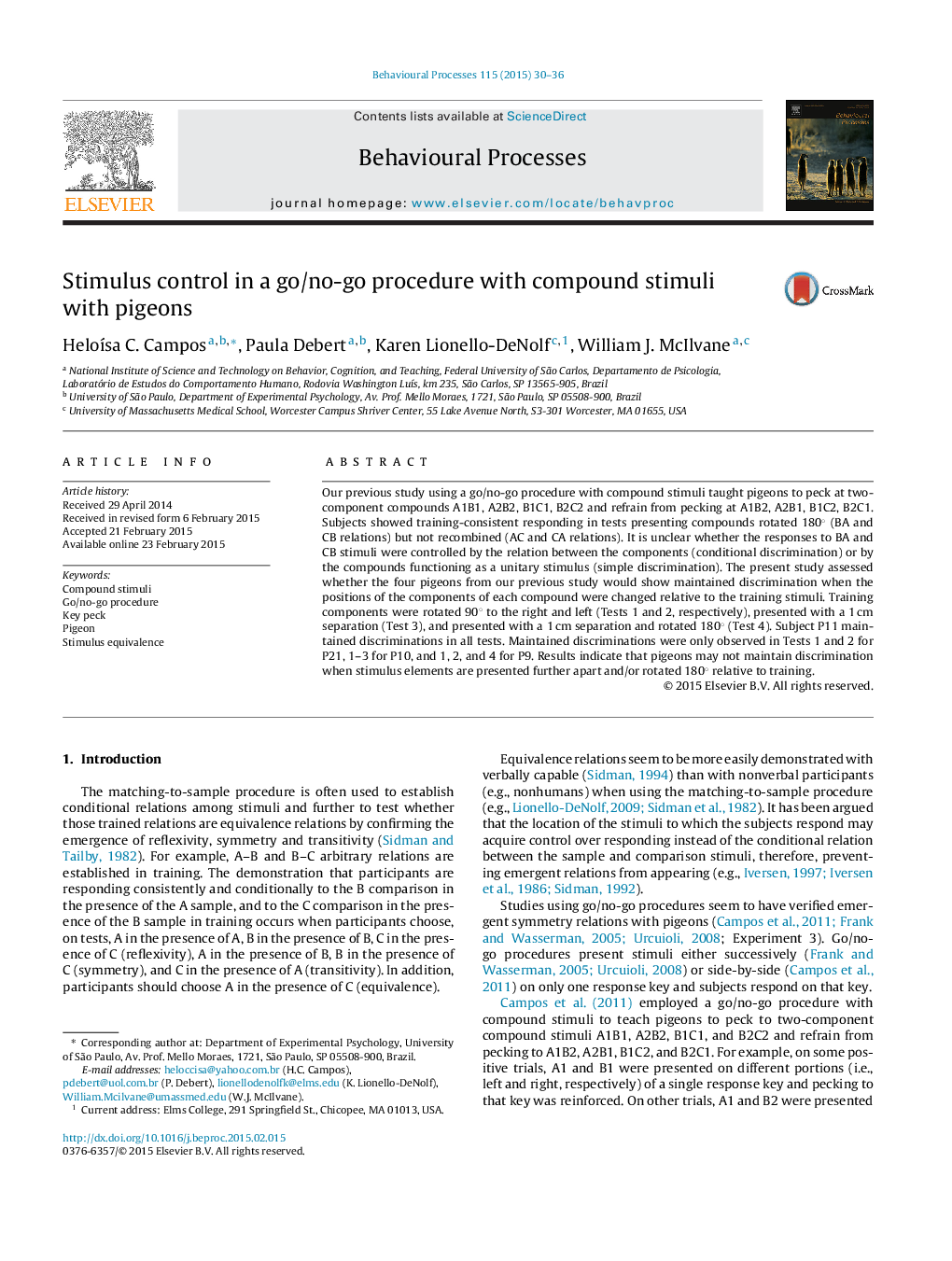| کد مقاله | کد نشریه | سال انتشار | مقاله انگلیسی | نسخه تمام متن |
|---|---|---|---|---|
| 2426587 | 1553165 | 2015 | 7 صفحه PDF | دانلود رایگان |
• P11 maintained discrimination when stimuli were changed relative to training.
• Performance of P11 suggested emergence of symmetry relations.
• Three subjects did not maintain discrimination when stimuli were changed.
• All subjects maintained discrimination when stimuli were rotated 90° left or right.
• Only two pigeons maintained discrimination when stimuli were separated.
Our previous study using a go/no-go procedure with compound stimuli taught pigeons to peck at two-component compounds A1B1, A2B2, B1C1, B2C2 and refrain from pecking at A1B2, A2B1, B1C2, B2C1. Subjects showed training-consistent responding in tests presenting compounds rotated 180° (BA and CB relations) but not recombined (AC and CA relations). It is unclear whether the responses to BA and CB stimuli were controlled by the relation between the components (conditional discrimination) or by the compounds functioning as a unitary stimulus (simple discrimination). The present study assessed whether the four pigeons from our previous study would show maintained discrimination when the positions of the components of each compound were changed relative to the training stimuli. Training components were rotated 90° to the right and left (Tests 1 and 2, respectively), presented with a 1 cm separation (Test 3), and presented with a 1 cm separation and rotated 180° (Test 4). Subject P11 maintained discriminations in all tests. Maintained discriminations were only observed in Tests 1 and 2 for P21, 1–3 for P10, and 1, 2, and 4 for P9. Results indicate that pigeons may not maintain discrimination when stimulus elements are presented further apart and/or rotated 180° relative to training.
Journal: Behavioural Processes - Volume 115, June 2015, Pages 30–36
